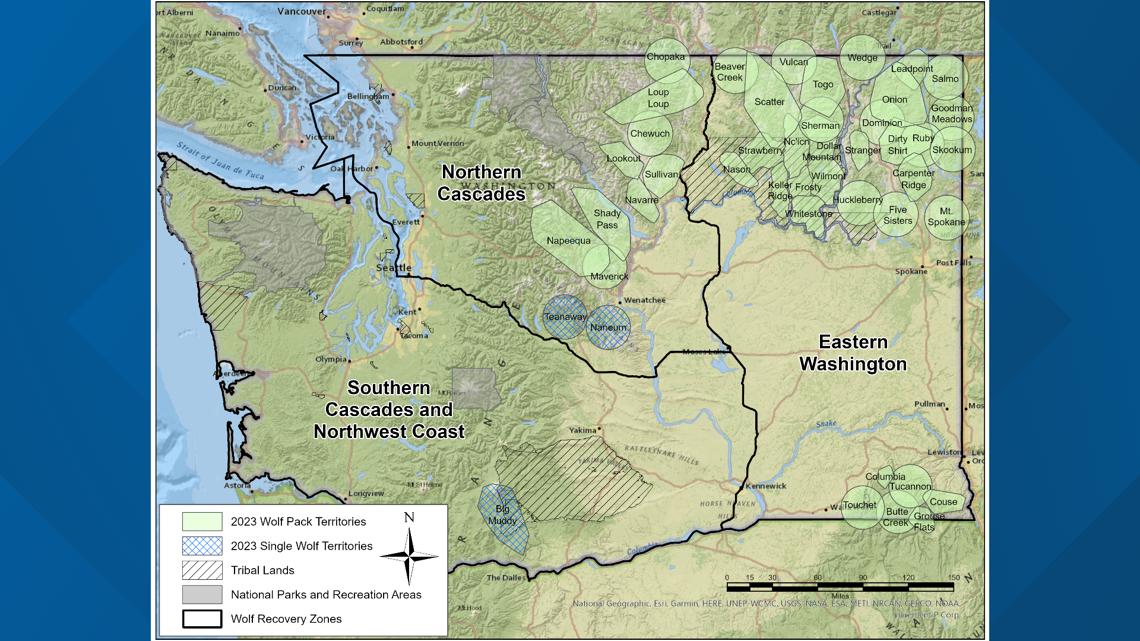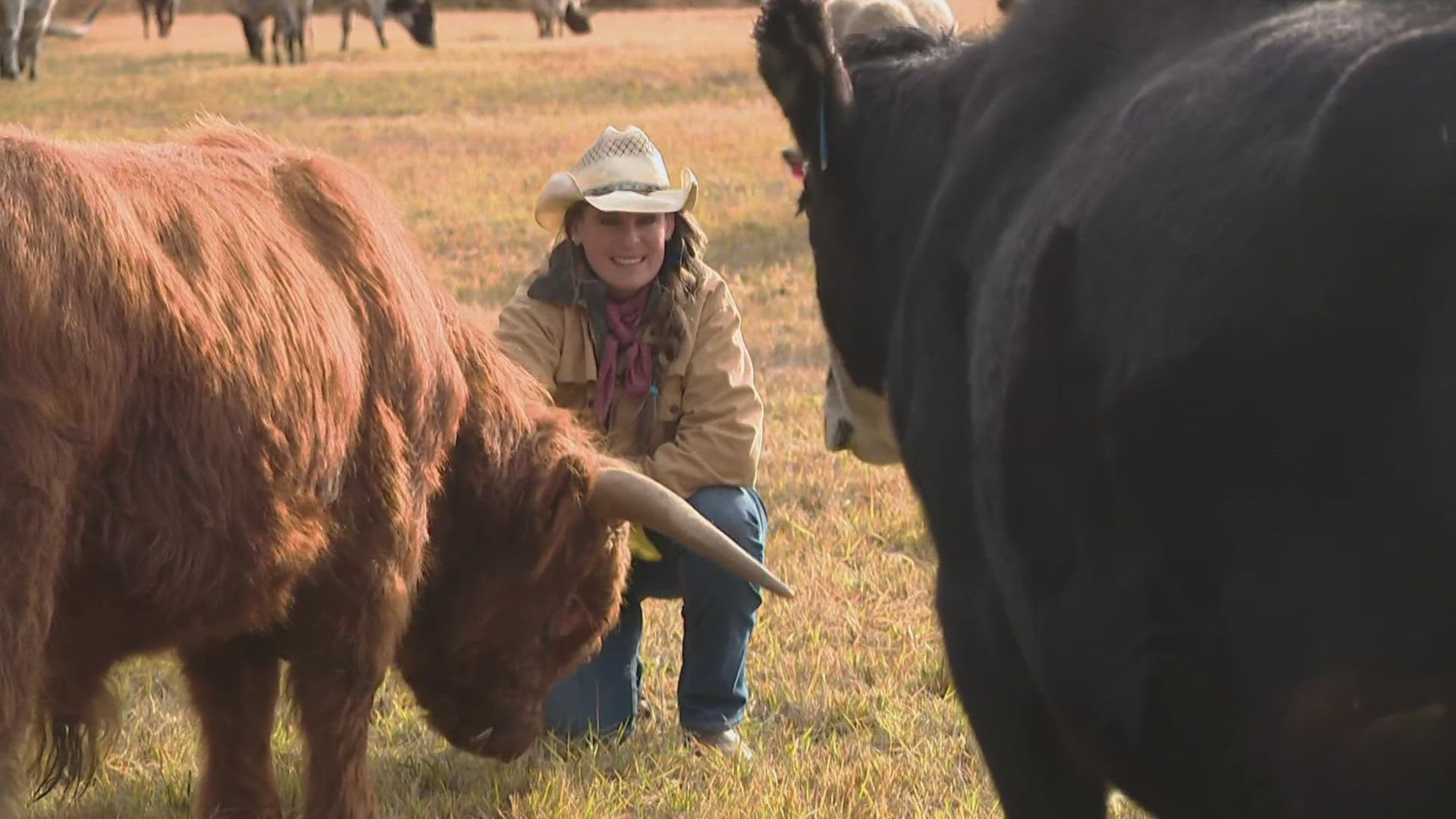SPOKANE COUNTY, Wash. — Washington state is home to a growing number of wolves, cougars and bears, and over the last decade, they've killed hundreds of livestock in eastern Washington.
In a KREM 2 investigation, Whitney Ward dug into the numbers and spoke with one woman who says she feels like her entire livelihood is under attack, not just by the apex predators, but also the state leaders who aren’t fixing the problem.
Kathy McKay is the lifelong owner of the K Diamond K Guest Ranch in Republic. The 1,700-acre ranch was built by her parents and McKay says she has spent her life continuing the family legacy and passing it on to others.
"We're the ones going extinct," said McKay.
McKay says the growing wolf population all around her land makes her wonder about the future.
"I know of about five packs that are within 25 miles, " she said.
McKay says the wolves have emerged as the number one threat only in the last 5-7 years. She says over the last decade, wolves have killed more than 100 cows, horses and other livestock animals. In 2024 alone, she says she has already lost at least 20 animals.
But wolves are not the only predators in eastern Washington.
According to the predatory wildlife incident map from the Washington State Department of Fish and Wildlife (WDFW), cougar sightings are the most frequent statewide.
It’s estimated there are 2,500 adult cougars in the state and there are thousands of reported sightings every year, along with occasional attacks on people, like one near Snoqualmie pass during summer 2024 and one in Stevens County in 2022 that seriously injured a little girl.
WDFW data also shows 247 depredation incidents involving cougars, mostly killing smaller animals like goats and sheep. 1-in-3 attacks happen in far northeast Washington -- Pend Orielle, Stevens, Ferry and Spokane counties.
Grizzly bears are reported far less often, with only a handful of sightings in 2024.
While grizzly bears are a protected species in Washington, they are managed at the federal level by the U.S. Department of Fish and Wildlife (USFW) and their numbers in Washington are minimal, with only a few dozen that roam between the U.S.-Canada border in the Selkirk Mountains and a handful in the North Cascades.
A draft plan from USFW to bring grizzlies back worries a lot of people in eastern Washington, most fearing that the bears will only add to the wolf problem.
For example, a grizzly was spotted on camera numerous times in Stevens County killing one family's chickens in 2023. The bear was later captured and relocated by WDFW.
According to WDFW, wolves are the predator spotted most regularly in Ferry, Stevens and Pend Orielle counties. More than half of the state's 42 documented packs are located in the northeast corner of the state.


Law enforcement in those counties say the official numbers of sightings, and even attacks on cattle, are just a fraction of reality.
"Some of the ranchers here aren't reporting anymore,” said Ferry County Sheriff Ray Maycumber. "They’ve given up on us coming up with solutions."
Maycumber has been the sheriff of Ferry County for the last decade and is now 1 of 16 eastern Washington sheriffs who have formed a coalition, raise awareness about serious concerns for public safety, and providing testimony to the Fish and Wildlife Commission.
"You've got bus stops out in the rural areas that overlap with known wolf territory. They're being seen all over the place, even in backyards," said Maycumber.
Maycumber says many ranchers and property owners in eastern Washington have lost faith in the state's ability, or willingness, to manage Washington wolves in a way that works for everyone.
“We keep following a plan that isn't working,” he said.
But with newly-elected state leaders, he is hoping they will choose to listen more to ranchers who are struggling.
Staci Lehman, WDFW Eastern Washington Communications Manager acknowledges the compensation program for wolf depredations isn’t working for everyone. She tells KREM 2 the only way to change state policy is through the “Gray Wolf Conservation & Management Plan.”
“We could open that up and re-discuss it,” she said. “That's something that would have to come at the direction of either the Fish and Wildlife Commission or a request from the Wolf Advisory Group.
But making any change is a lengthy and complicated process. And McKay it may be too little, too late.
"There's people 300 miles away making decisions for our livelihood, and I feel like we're preaching on deaf ears," said McKay.
Right now, the Washington Wolf Advisory Group is considering changes to its compensation process for ranchers who do report livestock losses.
Some property owners have also asked to open a limited wolf hunt in NE Washington. However, WDFW officials say options are severely limited until wolves are down-listed in the state -- and the last request for that was rejected by the Fish and Wildlife Commission.

